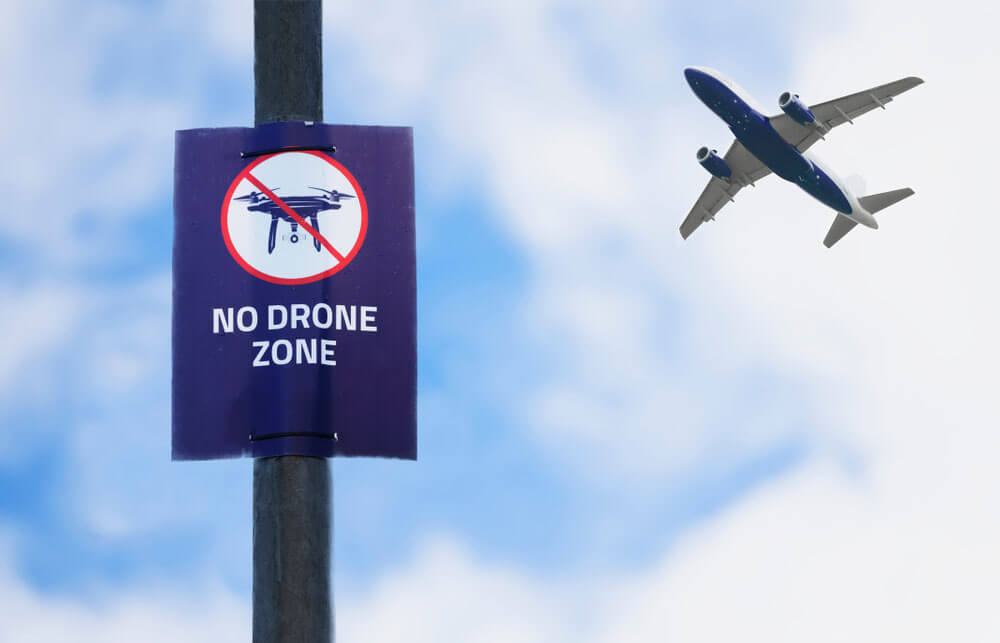By: Noor Razzaq
Since the onslaught of Russia’s invasion of Ukraine in February of 2022, the global military community has been jolted into a new era of unmanned aerial systems (UAS) warfare; a revolution in military affairs (RMA) with drastic implications across the spectrum of conflict. The Ukrainian battlefield has since become and continued to be a crucible for counter-UAS (C-UAS) innovation, with drones playing a pivotal role in reconnaissance, targeting, and direct (kinetic) attacks. A stark example came in October 2022, with missile strikes from a swarm of Iranian-made Shahed-136 kamikaze drones struck Kyiv, which disabled large sectors of the Ukrainian power grid. The increasingly evident and urgent need for effective C-UAS capabilities and planning continues to spur nations across the globe to reassess and bolster their C-UAS strategies. This article delves into the current approaches by Japan, Australia, Canada, and the United Kingdom in addressing the evolving challenges posed by UAS technology, examining how these countries are adapting their defense capabilities to meet this pressing threat.
Japan’s Proactive Stance on C-UAS
Driven by its complex security environment, Japan finds itself at the forefront of C-UAS development. The Japanese Self-Defense Forces (JSDF) have observed a significant increase in UAS activities near their airspace, prompting a robust response
Intensifying UAS Monitoring and Response
Japan’s defense forces consist of three services: Ground Self-Defense Forces, Maritime Self-Defense Force, and Air Self-Defense Force, consisting of a total of approximately 200,000 personnel. These forces are tasked with countering intrusions into Japanese airspace, including those by unmanned systems.
Colonel Yuka Nakazato of the JSDF reported a consistently high number of scrambles against foreign aircraft with an emphasis on UAS, with an increase in aircraft scrambles between Russian and Chinese incursions rising, respectively, from 124 and 158 and 359 and 415 in 2003. These numbers have remained steadily near or over 1000 since 2016. This translates to an average of three scrambles per day. While other adversaries account for some of these incursions, China and Russia account for the majority of these incidents, with Chinese UAS activities expanding from the East China Sea to the Pacific Ocean, Philippine Sea and Sea of Japan. A significant portion of UAV passes occur between the islands of Okinawa and Miyakojima.
Expanding UAS Threat Landscape
The range of UAS activities observed by Japan has expanded substantially in the past few years. Since 2018, Chinese UAV operations have moved from the East China Sea to the Pacific Ocean, the Philippine Sea and the Sea of Japan. Various types of UAS have been deployed, sometimes flying alone and sometimes in conjunction with manned aircraft like intelligence gathering planes and patrol aircraft. Adding to this persistent threat, the JS Izumo incident, in which Japanese Ministry of Defense officials proclaimed the authenticity of a social media video of a Chinese drone having approached Japan’s largest warship since World War II from rear and over the deck, occurred in May of this year.
Technological Advancements and Collaborations
Japan is investing heavily in C-UAS technologies, focusing on developing efficient and effective countermeasures. Its research focuses on various types of high-energy lasers and other technologies to intercept drones using high-power microwaves. These efforts are part of Japan’s strategy to reinforce more efficient and effective UAV countermeasures within the next decade.
Japan has also signed agreements for joint research with the United States on autonomous systems and is pursuing trilateral cooperation with the US and Australia in the UAS domain. This includes “Overwhelming Response Through Collaborative Autonomy,” in partnership with the U.S. since December ‘22. This collaboration extends to research on artificial intelligence (AI) for unmanned systems, expected to be applied to UAVs operating alongside Japan’s next-generation fighter aircraft.

Australia’s Innovation-Driven Approach
Australia’s strategy for C-UAS is deeply rooted in innovation and sovereign capability development. The country has established a new organization called the Advanced Strategic Capabilities Accelerator (ASCA) to drive rapid capability insertion.
Project LAND 1508: A Case Study in C-UAS Development
Australia’s Project LAND 1508 serves as a prime example of their approach to C-UAS. This project aims to deliver deployed counter-small UAS capabilities, focusing on low-cost, portable and software-definable solutions. The project emphasizes rapid capabilities and iterative development, allowing for quick user feedback and continuous improvement. Project LAND 156, led by LTCOL Josh Mickle, seeks to develop and acquire C-sUAS for both deployable, expeditionary and domestic use to protect buildings, strike packages, headquarters, and expeditionary bases and other nodes from small UAS (sUAS). The desired characteristics of such capabilities including lowered cognitive load on the operator, reduced human-in-the-loop where possible, cost effectiveness as related to cost-per-kill, low force signatures across spectra, mobile and static coverage in complex terrain and integration of C-UAS with existing capabilities at the front to offer additional utility in force.
Leveraging Domestic Innovation Through Competition
Australia is actively engaging its domestic defense industry to develop C-UAS solutions. The country ran and also had its businesses participate in counter-drone technology competitions, resulting in contracts with Australian companies. For example, Australian company AIM Defence won the $1M prize award from the Canadian International Counter Drone Sandbox, a competition on detecting and/or defeating Micro and Mini UAS with systems that can be integrated into the broader military command and control system. Its Fractl system could track and neutralize drones from up to 1.5 km away. The Australian Army Drone Racing Team tournament enabled military/civilian competition in racing drones at high rates of speed. This contestual approach enables collaborative innovation through friendly competition to strengthen Australia’s sovereign defense capabilities.
Strategic Imperatives and Changing Priorities
Australia’s 2023 National Defense Strategy and Integrated Investment Program articulate a shift in strategic focus. This includes investments in long-range strike capabilities, nuclear-powered submarines and integrated air and missile defense systems. The strategy emphasizes the need for speed to capability, focusing on small, iterative capability insertions rather than traditional, lengthy acquisition programs.
ASCA’s Role in C-UAS Development
ASCA employs strategic targeting and flexible contracting mechanisms, allowing for quick adjustments if certain technologies don’t meet expectations. The organization works closely with academia, the scientific community and emerging tech companies to bring forward innovative solutions based on identified needs, operating. on a mission-driven approach with approximately $100 million per mission.
Canada’s Centralized and Collaborative Strategy
Canada has adopted a centralized approach to C-UAS development, coordinated through the Chief of Combat Systems Integration office and Joint Counter-UAS office (established in July 2024), both headed by a single point of leadership, Colonel Chris Labbé. This structure allows for a coherent, joint approach across all military services.
Comprehensive Program Approach
Through their newly established JCO, Canada is implementing a national governance framework for C-UAS, emphasizing interoperability with allies, particularly within NATO. The country is focusing not just on technology development but also on workforce training, doctrine development, and support exploitation.
Innovation Pathways
In addition to hosting the Canadian International Counter Drone Sandbox, the launch of the IDEaS NORAD Modernization Science & Technology (S&T) Contest offers significant grants for research and development in C-UAS-related areas, encouraging both domestic and international participation, offering up to $19 million to advance innovative solutions in areas significant to NORAD’s modernization.
Centralized Authority and Joint Force Development
The Chief of Combat Systems Integration office in Canada has been designated as a functional authority for C-UAS, allowing it to issue orders and set technical standards. This office will own the requirements for joint C-UAS efforts, prioritizing joint force development, research, and development. The aim is to provide a common acquisition framework that moves quickly and coherently.
Collaborative Ecosystem
Labbé has stated that, as with other nations, the primary challenge is to ensure the most effective C-UAS solutions are contained within and across systems of systems. Thus, Canada’s approach emphasizes collaboration with a wide range of stakeholders, including allies, industry, academia and other government departments. This collaborative ecosystem helps deliver innovation rapidly and ensures a more informed and coherent communication strategy.

United Kingdom’s Multi-Faceted C-UAS Strategy
The UK’s approach to C-UAS is characterized by a mix of legacy system upgrades and new technology development. The country is focusing on both kinetic and non-kinetic solutions to address the UAS threat.
Legacy System Adaptation
The UK has been testing the use of existing weapon systems, such as the 40mm cannon and .50 caliber machine guns for C-UAS applications. By upgrading fire control systems and developing specialized ammunition, they aim to repurpose these legacy systems for effective drone engagement.
New Technology Integration
The UK has conducted trials with various detection and defeat systems, including the use of lasers and electronic warfare capabilities. The country is also exploring the integration of C-UAS systems onto vehicles to provide mobile protection; however, much of the emphasis has been on dismounted close-quarters defeat capabilities. Squadron Leader Hugo Morris discussed various Land GBAD Programme capabilities. At the Section (Squad) Level, two major integrations include the SMASH Smart Weapons Sight (SWS) and the Electro-Magnetic Detect & Defeat (EMDaD). At the company level, an emphasis is placed on Coy Detect & Defeat with crossover between commercial off the shelf (COTS) equipment and UK proprietary electronic counter measures (ECM) for C-UAS.
SMASH SWS for the tri-service dismounted combat community uses computer targeting and programming to determine a firing solution at the individual small-arms level (fitted to a 5.56mm L85 assault rifle) by picking up the rotation of a quadcopter or other drone. The weapon will not fire until that firing solution is achieved, enhancing achievement of target neutralization at around the 70-80% mark of a first-round target acquisition in the hands of a trained user – a large increase from a near zero probability of first round engagement without the system. To complement the SMASH is the body-worn Electro-Magnetic Detect & Defeat (EMDaD), which uses electromagnetic signals to detect and disable drones by disrupting communications/control systems by picking up RF signals used for navigation (detect) and emitting same-frequency jamming to enable disruption or cause the drone to return to a safe location.
Operational Testing and Rapid Deployment
The UK is prioritizing rapid testing and deployment of C-UAS capabilities. They are planning to field systems in operational environments, such as in Estonia, to gain real-world experience and refine their approach. This includes exploring opportunities for operational experimentation with coalition partners. Multiple projects to include two Quarter 2 2025 initiatives (ASGARD and Vanaheim) for rapid acquisition and implementation of integrated proprietary UK technologies with COTS capabilities. The eventual goal is deploying these systems to enhance and update C-UAS systems and capabilities at the speed of relevance.
Industry Engagement and Innovation
The UK has engaged with industry through various initiatives, including competitions for counter-drone technologies. They have also been working on upgrading existing platforms, such as the Foxhound vehicle, with C-UAS capabilities.
Common Themes and Divergences
While each country has its unique approach to C-UAS, several common themes emerge:
- Emphasis on Innovation: All four countries are heavily investing in research and development, encouraging innovation in both the public and private sectors.
- Interoperability: There’s a strong focus on ensuring C-UAS systems can work seamlessly with allies, particularly within NATO frameworks.
- Rapid Capability Insertion: Each country is prioritizing quick development and deployment cycles to keep pace with evolving threats.
- Multi-layered Approach: C-UAS strategies encompass a range of solutions, from kinetic to electronic warfare capabilities.
However, there are also notable differences:
- Organizational Structure: While Canada has centralized its C-UAS efforts, other countries maintain more service-specific approaches.
- Focus Areas: Japan appears more concerned with long-range UAS threats, while the UK and Australia are emphasizing portable, tactical-level solutions.
- Industry Engagement: Australia and Canada have more explicit programs for engaging domestic industry in C-UAS development compared to Japan and the UK.
- Legacy System Utilization: The UK stands out in its efforts to adapt existing weapon systems for C-UAS roles, while other countries seem more focused on developing new technologies.
- Geographical Considerations: Japan’s approach is heavily influenced by its maritime environment and regional tensions, while Australia’s strategy reflects its vast landmass and strategic alliances.
Staying One Step Ahead of the Threat
Given the ubiquity of UAS, the C-UAS problem is here to stay. As the UAS threat continues to evolve, so too do the strategies to counter them. Japan, Australia, Canada, and the United Kingdom each bring unique perspectives and solutions to the table, contributing to the ongoing global effort to address this critical security challenge. The combined efforts of these and other allies and partners combined with the ever-evolving threat highlight the importance of innovation, collaboration and adaptability in developing effective C-UAS capabilities for the modern battlefield, as it continues to face this new and increasingly updated technology.
The diversity in C-UAS approaches reflects each nation’s specific security needs, technological capabilities and strategic priorities. However, the common thread of rapid innovation and international cooperation underscores the global nature of the C-UAS challenge. As these nations continue to refine and implement their strategies, the lessons learned and technologies developed in countering UAS technologies – combined with UAS and C-UAS battlefield and S&T innovations from allies and adversaries – will continue to shape the rapid evolution of C-UAS capabilities worldwide.
By: Noor Razzaq

